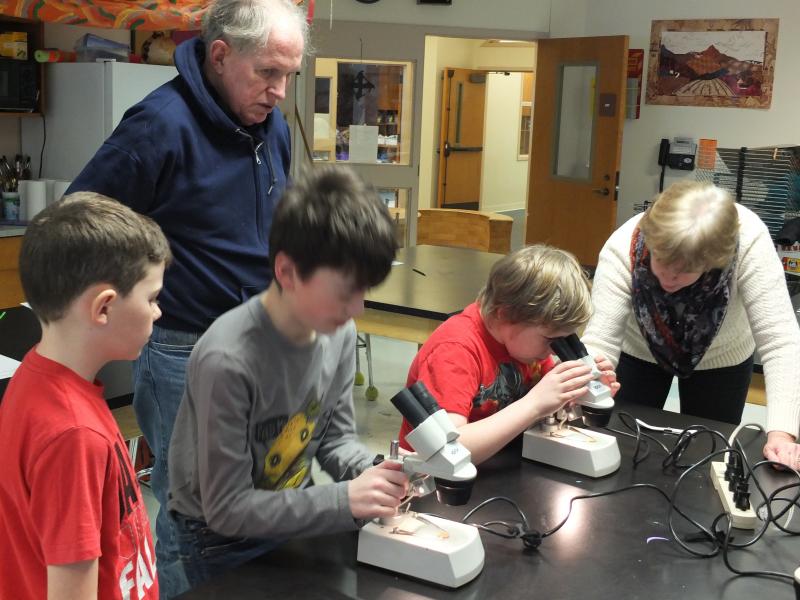Feb. 10 was rainy and gray, not a typical Maine beach day, but for a group of retired scientists and six Edgecomb Eddy School students, it proved a bright and sunny learning experience. Three retired scientists shared their knowledge about how sand is created during an Edgecomb Eddy Science Club meeting. The lesson led by “senior scientists” from the Maine School of Science was called “A Day at the Beach.”
The Maine School of Science Volunteers consists of retired educators and scientists who share their knowledge with kindergarten through grade 12 students. The senior scientists began teaching monthly lessons four years ago at the invitation of then educational technician Sarah Currier. She began the science club and continues to lead the program now as a third grade teacher. In 2016, Currier was looking for innovative ways to bring more programming into Edgecomb’s classrooms without spending a lot of money.
She found MSSV while attending an out-of-town science fair and she stumbled across the senior group. “The school was looking to do more with less. I saw the MSSV booth and they were exactly what we were looking for. They have a lifetime of experience and they are volunteers so there is no cost.”
On Feb. 10, retired geologist Ellen Bennett of Topsham led the investigation of different sands. She told the club sand looks and feels different all over the world. The volunteers, including Bennett’s MSSV colleagues Alan Burns and Ken Ault, brought sand samples from beaches all over the globe to study. The first lesson was explaining how scientists categorize various samples. Bennett asked students how they could group seven different bags of sand samples. The students all agreed color and texture were the two most prominent categories.
So the volunteers led a closer examination of seven different beach sands from Maine, Florida, Hawaii and a couple international ones. Students examined sand samples through four binocular microscopes. The students discovered differences in how beaches are created. In Maine, they discovered the beaches were made primarily of quartz. The two Florida beaches were white and one at Cinnamon Beach consisted of “sugar sand.” And a Hawaiian beach was black because it was created in a volcanic eruption.
Fourth grader Myles Whitfield is one of six Edgecomb Eddy Science Club members who participated in the lesson. Whitfield is an enthusiastic science student who aspires to become an oceanographer. He joined the club because “science explains the universe.” His passion for science is also inspired by his mother who is a teacher. “She comes home and does her homework while I do mine so that’s how I first became interested in science and made me want to learn more,” he said.
MSSV provides afterschool programs in various Midcoast schools. The Edgecomb Eddy Science Club meets the second Monday of each month from 2:45 to 4 p.m.































